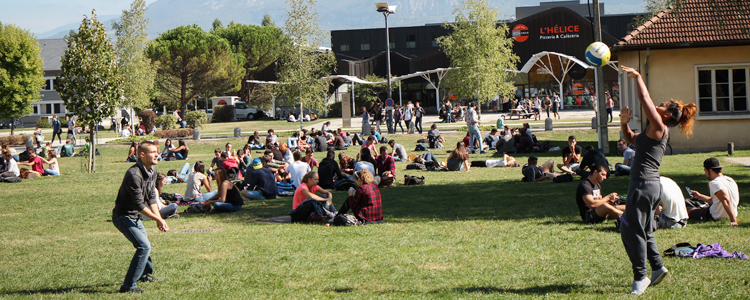Université Savoie Mont Blanc (USMB) defines itself as a university of research and professionalization, firmly rooted in its local area, resolutely European and open to the world.
This strategic positioning is underpinned by indisputable results, attested to by indicators and rankings, both in research - the USMB features in the Shanghai rankings - and in academics, a close historical link with the two Savoy regions and their socio-economic players, a resolute commitment to building a sustainable and ambitious European university, and a strong internationalization of its activities - the USMB is the leading university in France for outgoing Erasmus mobility as a proportion of enrolments.
The USMB enjoys the unfailing support of the local authorities and has two very close partners:
- The Club des entreprises de l'USMB, an association founded in 1991, works with the university to promote the professionalization of students and the professional integration of graduates;
- The USMB Partnership Foundation, which has been supporting research and innovation since 2016, through research chairs and exploratory projects, linked to the region's challenges.
USMB's strategic ambition is to develop high-impact research and training to better understand and support environmental, industrial and societal transitions. To achieve this, the school is focusing on three key priority areas in which it has internationally recognized expertise:
- Human-environment interactions ;
- Services and industries of the future ;
- Cultural heritage and changing societies.
For the coming years, this ambition is reflected in the clear guidelines set out in its 2021-2026 multi-year contract with the Ministry of Higher Education and Research:
- Increased support for emerging and interdisciplinary research, to better prepare for the future;
- A pro-active policy of valorizing research work, to better contribute to today's innovation;
- Education that meets the expectations of stakeholders, first and foremost students and employers. In addition to the ongoing transformation of the first cycle, the second cycle will be reformed to develop a cross-disciplinary approach to the above-mentioned priorities and strengthen links with research;
- Close cooperation with all the academic and socio-economic players in the wider region, including cross-border areas;
- Increased internationalization of research and academics, a guarantee of excellence and attractiveness;
- Building an ambitious European alliance and transforming it into a sustainable, institutionalized European university in line with its priorities.
The 2024-2026 Contract of Objectives, Means and Performance completes the multi-year contract, focusing on the management of the establishment, research infrastructures and the deployment of artificial intelligence in university activities.
In the interests of coherence and synergy, resources obtained through French or European calls for projects, through dialogue with supervisory bodies or under the French Research Programming Act (LPR) are systematically used to meet contract objectives and follow up on recommendations made by the French High Council for the Evaluation of Research and Higher Education (Hcéres).
Three programs have a particularly structuring character:
- NCU @spire (undergraduate student success; Investissements d'avenir) ;
- ExcellencES SHINE (excellence and differentiation strategy; France 2030) ;
- UNITA (long-term European commitment; Erasmus+).
On the strength of its results and the confidence of its partners, the USMB has adopted a clear strategy, in line with the challenges of today and even more so those of tomorrow. Day by day, it is increasing its impact on society and striving for excellence in all the missions entrusted to it.
